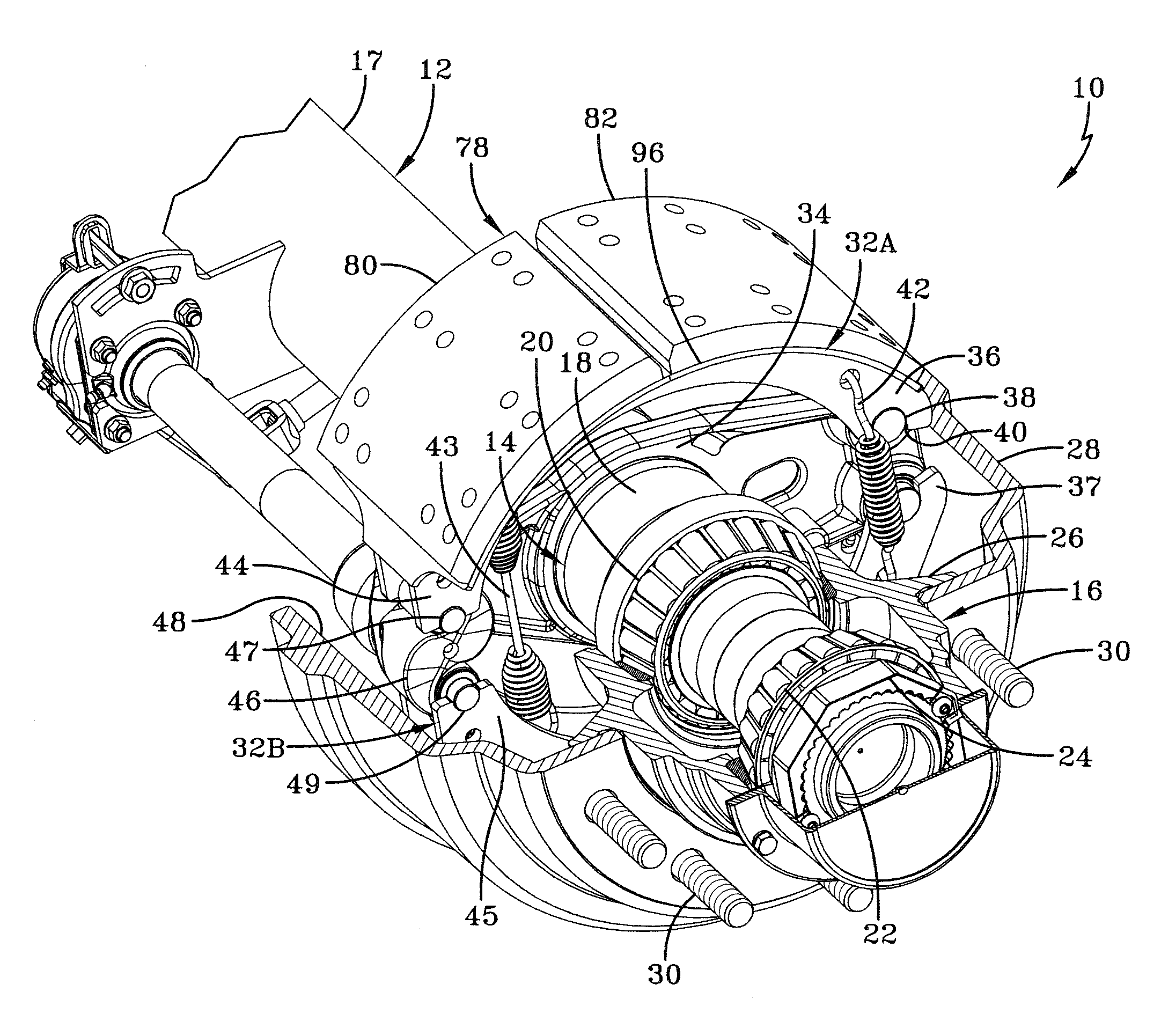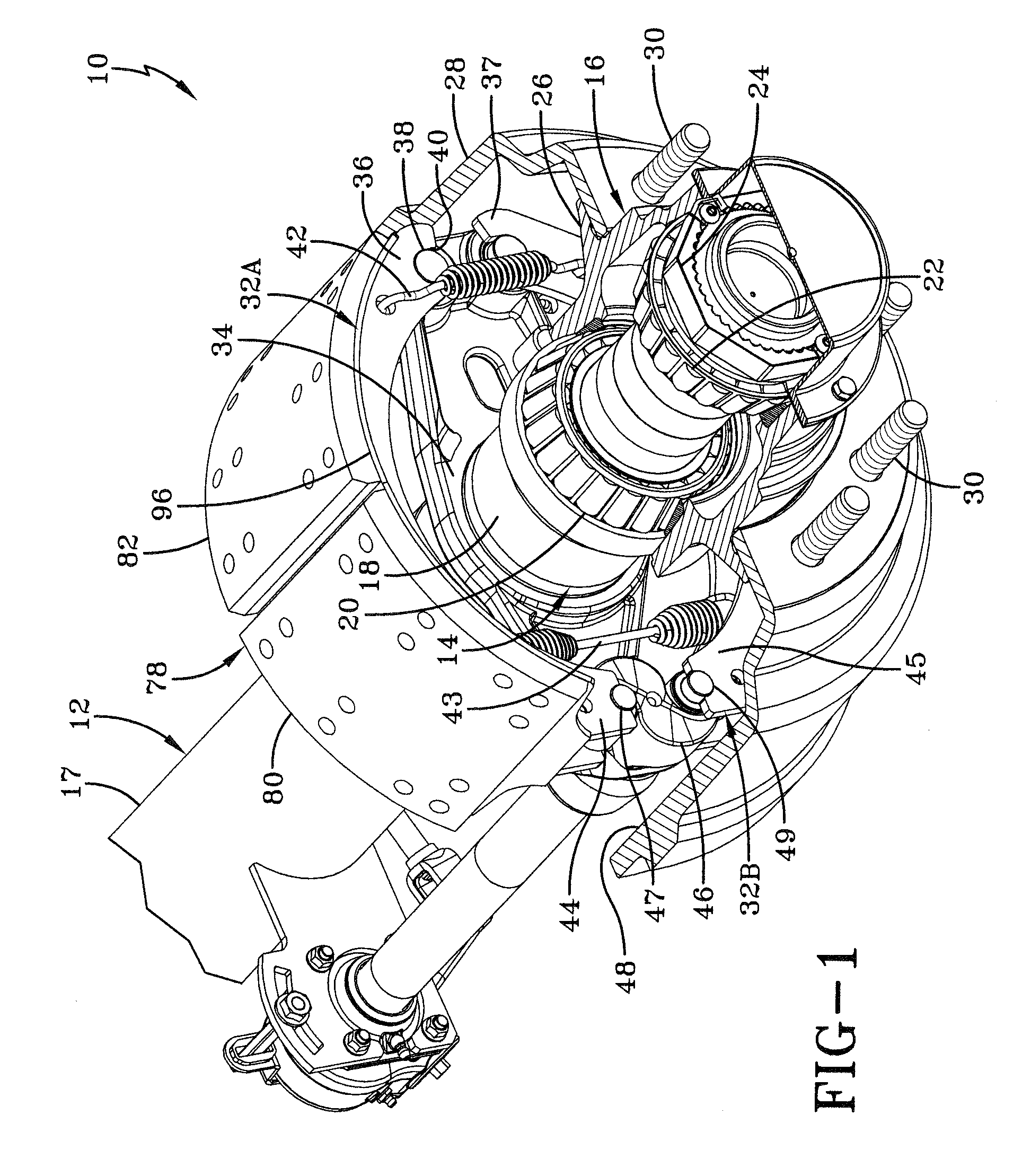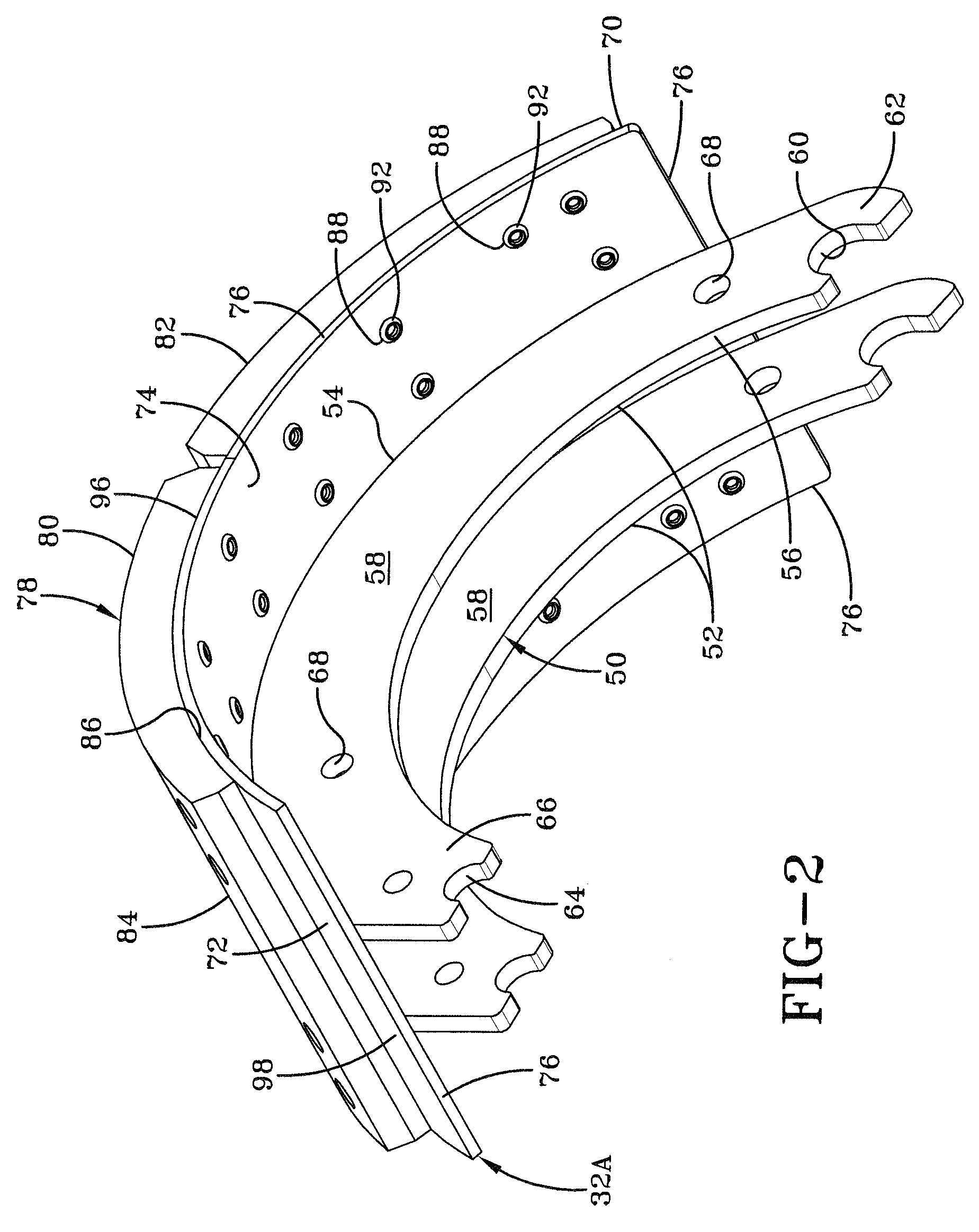In the prior art, certain road conditions have created an undesirable condition for brake shoes, which is known in the art as
rust jacking.
More particularly, when a heavy-duty vehicle travels over roads and there is
moisture on the
road surface, road spray may be generated.
Because the brake shoes are located on the lower portion of the vehicle and typically are unprotected from road spray and cross splash, when the vehicle travels over wet roads, road spray and cross splash tends to collect on the brake shoes.
However, the use of mechanical fasteners enables small gaps to form in areas of the interface between the
brake lining and the shoe table that are between or outside of the fasteners, including the perimeter or the outside edges of this interface.
As a result, when the
brake lining is attached to the shoe table, the shoe table may include openings that have not received a mechanical
fastener.
The accumulation of
moisture and salt and / or other chemicals at the interface between the
brake lining and the shoe table causes
corrosion cells to form on the shoe table at this interface.
Because the brake lining is secured to the shoe table by mechanical fasteners, once the rust buildup becomes significant, the rust creates an outward force on the brake lining against the fasteners which may cause the brake lining to crack.
In some cases, the rust buildup may be extensive enough to dislodge the lining from the mechanical fasteners, requiring immediate replacement of the brake shoe.
As a result, rust jacking undesirably reduces the life of the brake shoe, which undesirably increases the cost, time and effort associated with maintaining the vehicle.
With the use of
calcium chloride as an anti-
icing chemical, water-based dip painting has been ineffective in providing a sufficient resistance to the formation of corrosion cells on the shoe table at the interface between the brake lining and the shoe table.
Without sufficient resistance to the formation of corrosion cells, rust can build up and rust jacking can occur on such brake shoes having water-based dip painted brake shoe tables.
In addition, severe braking conditions experienced by the vehicle often exacerbate rust jacking in vehicles that employ brakes having water-based dip painted brake shoe tables.
As a result, the
bare metal of the shoe table is exposed in the scuff areas.
However, the e-
coating process involves the purchase and maintenance of costly equipment, causing the process to be undesirably expensive.
More particularly, if the conditions and steps of the process, which are known to those skilled in the art, are not performed under optimum conditions, the resulting e-coating may not sufficiently adhere to the surface of the shoe table.
If the e-coating does not sufficiently adhere to the shoe table, the coating may separate from the shoe table under performance conditions, which enables corrosion cells to form on the shoe table, in turn creating the possibility that rust jacking still may occur.
When anti-
icing chemicals that include
magnesium chloride collect on the brake shoes, e-coating does not provide a sufficient resistance to the formation of corrosion cells on the shoe table at the interface between the brake lining and the shoe table.
Without sufficient resistance to the formation of corrosion cells, rust is able to build up and rust jacking is able to occur on brake shoes with such e-coated brake shoe tables.
Moreover, as described above, severe braking conditions cause the brake lining to scuff the shoe table at the interface between the brake lining and the shoe table.
This scuffing removes some of the e-coating, resulting in the
exposure of the
bare metal of the shoe table.
Typically, a principal factor that undesirably limits the number of times a shoe table can be re-used is corrosion or pitting of the shoe table, which is a
disadvantage with a brake shoe having an e-coated shoe table.
That is, when a shoe table that was previously e-coated is re-used, the coating typically is not sufficient to continue to
resist the formation of corrosion cells on the shoe table at the interface between the brake lining and the shoe table, thereby enabling rust jacking to occur.
Moreover, if the shoe table is e-coated again, surface imperfections on the shoe table caused by typical wear or previous surface pitting prevent optimum depositing of the coating, also reducing the ability of the coating to
resist the formation of corrosion cells on the shoe table at the interface between the brake lining and the shoe table, again enabling rust jacking to occur.
While such UV-cured coatings sometimes reduce rust jacking, they are often undesirably expensive to apply, and in many cases, do not provide sufficient resistance to the formation of corrosion cells on the shoe table at the interface between the brake lining and the shoe table for a significant length of time, thereby eventually enabling rust jacking to occur anyway.
Moreover, when severe braking conditions cause the brake lining to scuff a shoe table with a UV-cured coating, the scuffing removes some of the coating, resulting in the
exposure of the
bare metal of the shoe table.
However, as described above, the brake lining is a sacrificial component that wears out over time, and is intended by manufacturers to be replaced at certain intervals.
In brake shoes that employ the double-sided sheet of
adhesive, the
adhesive attachment to both the shoe table and the brake lining makes removal of a worn brake lining from the shoe table extremely difficult and
time consuming.
As a result, removal of the worn brake lining from the shoe table cannot be performed efficiently or cost-effectively, often resulting in the entire brake shoe being scrapped, which undesirably increases waste and the cost to maintain the heavy-duty vehicle.
 Login to View More
Login to View More 


